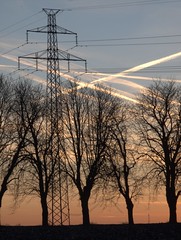One year ago today, the eastern seaboard incurred the wrath of Superstorm Sandy, a massive storm delivering rain, wind and huge storm surges that resulted in hundreds of deaths, extended loss of power to millions of homes, extensive flooding and fire and destruction of homes and businesses up and down the east coast and particularly devastating to New Jersey, Connecticut and New York City.
The reasons for Sandy’s occurrence are still being debated, with climate change deniers holding to their position. While these arguments continue, it is important that we acknowledge changes that are desperately needed to contain or prevent the severe levels of destruction that we experienced with Sandy from recurring, no matter the cause. To that end, the National Resources Defense Council (NRDC) has enumerated post-Sandy priorities for governmental action.
Today we would like to call attention to two of the principal subjects of these post-Sandy priorities, building in flood-prone areas and protection of infrastructure, both of which must be effectively addressed to prevent and/or reduce incidences of loss of life and extreme property destruction during severe storms.
Regarding the issue of building in flood-prone areas, the severe property destruction of water-front or water-accessible residential properties in New York and New Jersey clearly shows us the inherent dangers of living close to large bodies of water, which persistently are subject to huge damaging storm surges during bad weather and accompanying high winds. We know that those living near the water are at such an increased risk of loss of life or property during violent storms, and as such, it is crucial to have plans in place to eliminate the incentives to build or live in flood-prone areas. It appears that even in the face of the destruction of Sandy, many of the shoreline residents have rebuilt or are determined to do so, despite the losses faced with Sandy or the potential future losses from other severe weather occurrences. A probable remedy for this mindset lies in the reform of the National Flood Insurance Program, “including phase-out of subsidized rates and updating of flood-risk maps.” Of course, any such plans should include compensation to individuals currently living in these subject areas. Additionally, property owners who insist on remaining in these areas and who are willing to bear the total cost of insurance for this privilege, must be required by law to rebuild in accordance with stricter resiliency standards. Finally, rules must be adopted to “require states to develop disaster preparedness plans that recognize increased flooding and other disaster risks from our changing climate.”
The second post-Sandy priority subject deals with infrastructure. Sandy’s descent on New Jersey and New York City brought to light the problems with the aging electrical grids, positioning of backup power systems within reach of flood waters and the failing storm water systems in those areas. Also, other jurisdictions on the east coast experienced the failure of sewage systems during extended power outages during the storm, witnessing the spillage of sewage into rivers and streams. Clearly, Sandy warned us of the need to protect critical infrastructure and to make it smarter and resilient to the fury of Mother Nature. We must pay special attention to our energy generation and distribution systems, as well as drinking water and wastewater treatment facilities. Plans for emergency response and public transportation systems are critical to preventing or reducing the loss of life and injury during severe storms and to being able to return to normal function in terms of activities of daily living after severe storms.
The main theme of these subjects of post-Sandy priorities is sustainability. Any effort to address issues of dealing with severe weather must be relative to sustainability. The journey to sustainable lifestyles requires each of us to do our part to protect the environment, to reduce our waste and energy consumption, which taxes our energy generation systems and overall to become stewards of the earth. To do so is to live green, be green.
______________
Sources for this article:
1. http://www.nrdc.org/globalwarming/files/post-sandy-priorities.pdf
2. http://www.baltimoresun.com/news/maryland/howard/ellicott-city/ph-sewage-spill-sandy-20121030,0,4479292.story
Related Articles:
- One Year After Sandy, Communities Rebuilding For Future Storms (newyork.cbslocal.com)
- Hurricane Sandy’s lessons include: Put parks, not houses, on the beach (sciencedaily.com)


